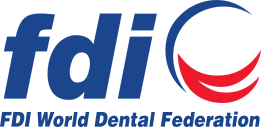Dental transposition: Alternatives of treatment
Location
Speaker
Fidel Nabbout
- October 2019- 2021 : Head of department of Orthodontics- Faculty of Dental Medicine, Lebanese University.
- October 2017- October 2019 : Master Program Director at the Department of Orthodontics- Faculty of Dental Medicine, Lebanese University
- October 2015- October 2017 : Head of department of Orthodontics- Faculty of Dental Medicine, Lebanese University.
- January 2014- January 2016 President of the Lebanese Orthodontic Society (LOS).
- October 2004- Present: Clinical and didactic teaching, Postgraduate and Undergraduate levels, Department of Orthodontics, School of Dentistry, Lebanese University
- July 2004-April 2006: Head, Division of Orthodontics, School of Dentistry, Lebanese University
- September 2001- Present: Practice limited to Orthodontics Private office, Lebanon.
This presentation will provide information on how to identify the proper type of transposition anomalies and establish an appropriate treatment plan for all possible situations.
Among dental anomalies, transposition is considered the most difficult to manage and represents a real challenge for the clinician.
Uncorrected, the results are often both functionally and aesthetically unsatisfactory.
Treatment of transposition varies from acceptance to correction and should take into account aspects such as age, dental morphology, malocclusion, facial aesthetics, stage of root development, position of root apices, and magnitude of the transposition.
Acceptance of the transposition is the predominating treatment strategy in case reports in the literature.
Indications, advantages and disadvantages of correction versus maintenance will be discussed.
Several cases of different types and combinations will be presented.
Finally the different treatment alternatives and their management will be clarified.
Learning objectives:
- Identifying the proper type of transposition anomaly with various dento-skeletal deformities associated to it
- Establishing a proper treatment plan for all possible situations
- Conducting the proper sequence in treatment of transposition anomalies
- Learn how to follow up the patient and being familiar with all possible complications
